Minuet kittens
UPDATED November 2024
i have RETIRed - VERY LAST KITTENS AVAILABLE
UPDATED November 2024


WELCOME TO Minuet Kittens Cattery - Here you can see gorgeous Minuet kittens with beautiful doll faces, soft velvety coats and fantastic personalities.
We are TICA registered cattery ( ID 27606) and we breed Minuet Kittens - those little short dwarf Munchkins.
If you have any questions for us, we will be very happy to answer them, after having your Application. It would actually help, if you read our Q and A page first.
In the past some people were concern about the health of these short legged cats.
Then a really big research was finished - done by Dr. Solveig Pflueger, then TICA’S chief geneticist. She found out during 10 years of research that there are no health problems or complications connected with cats short legs gene, that these Munchkin kittens are totally healthy. Just the oposit is true - because these are cross between two breeds, there is no inbreeding involved and these kittens are very healthy.
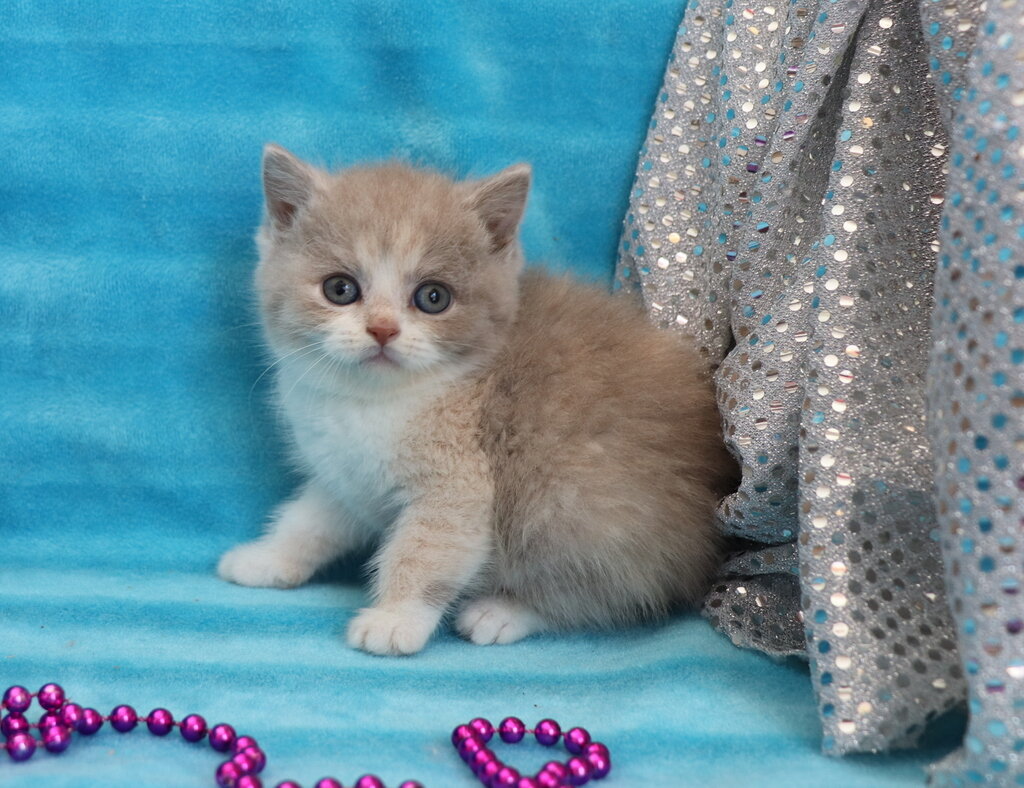
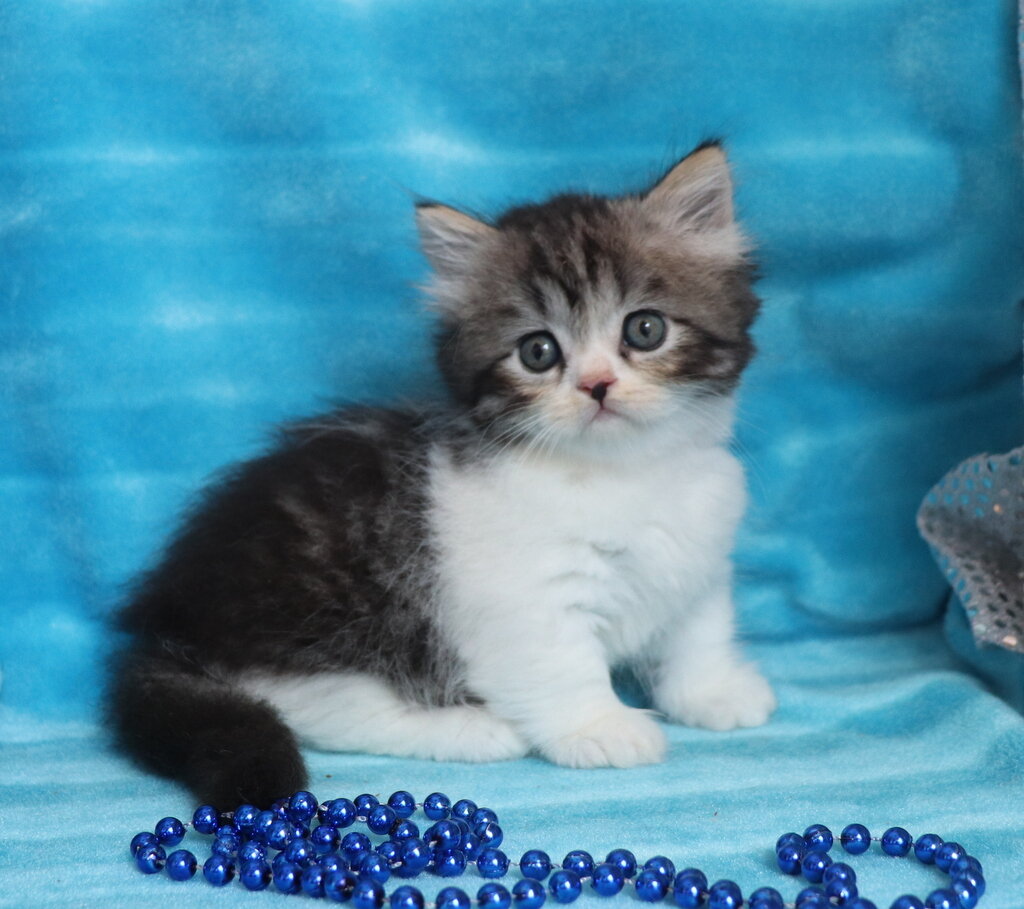
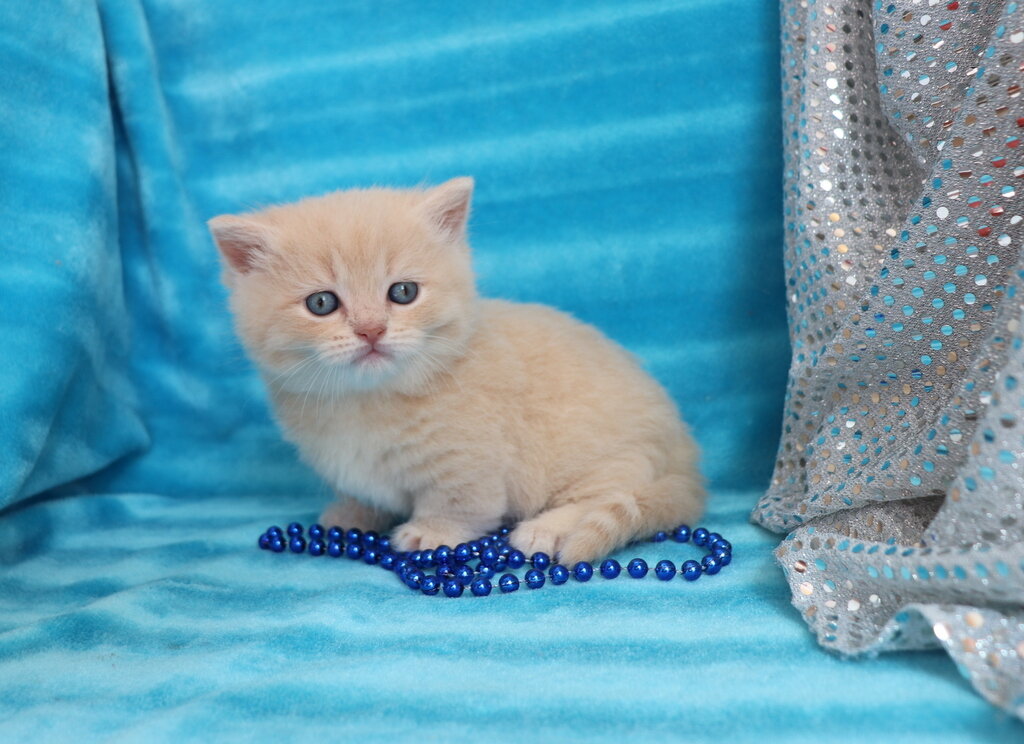
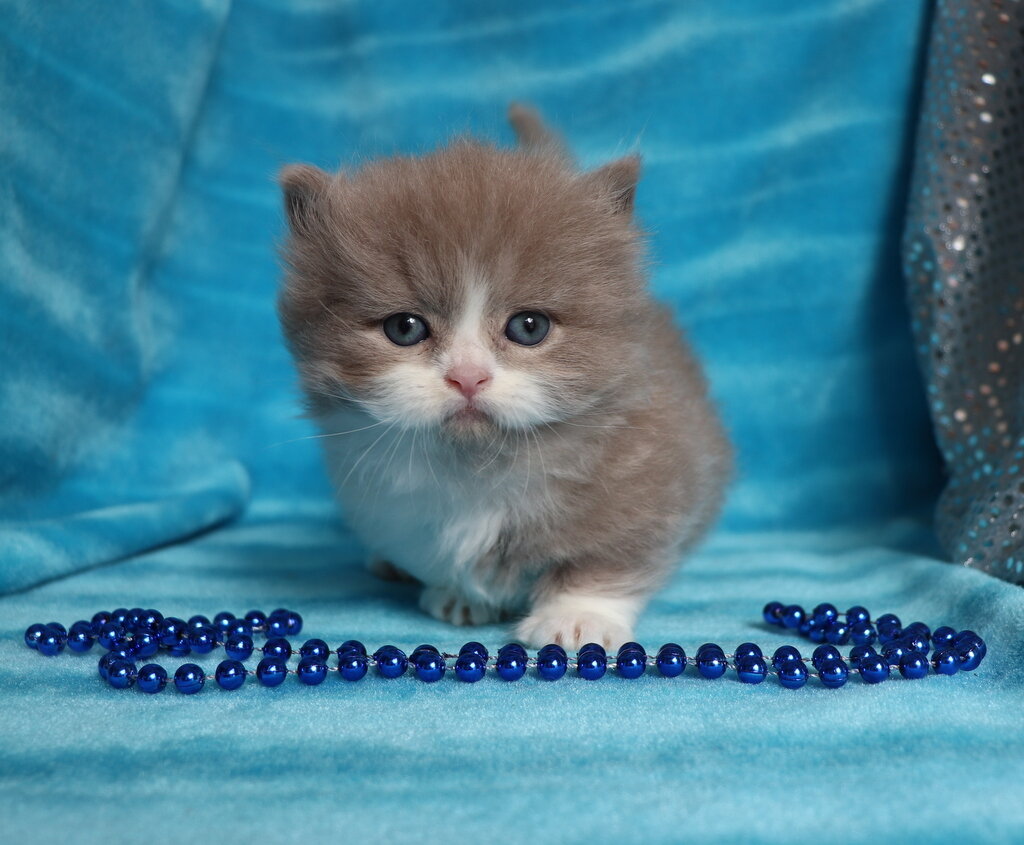
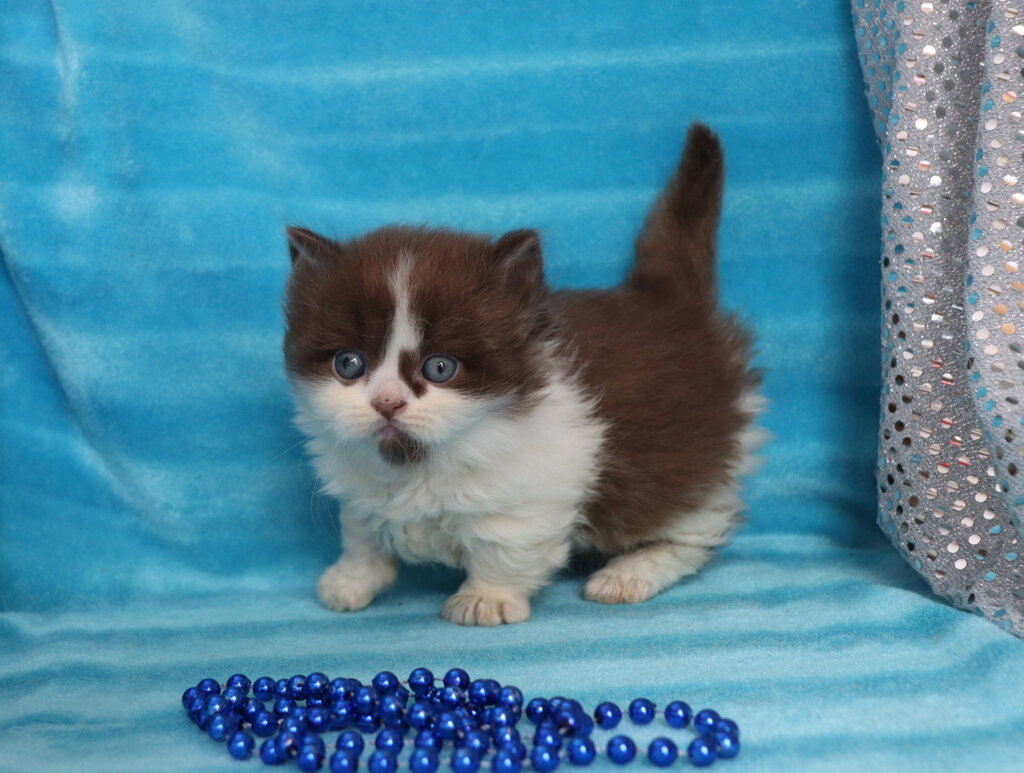
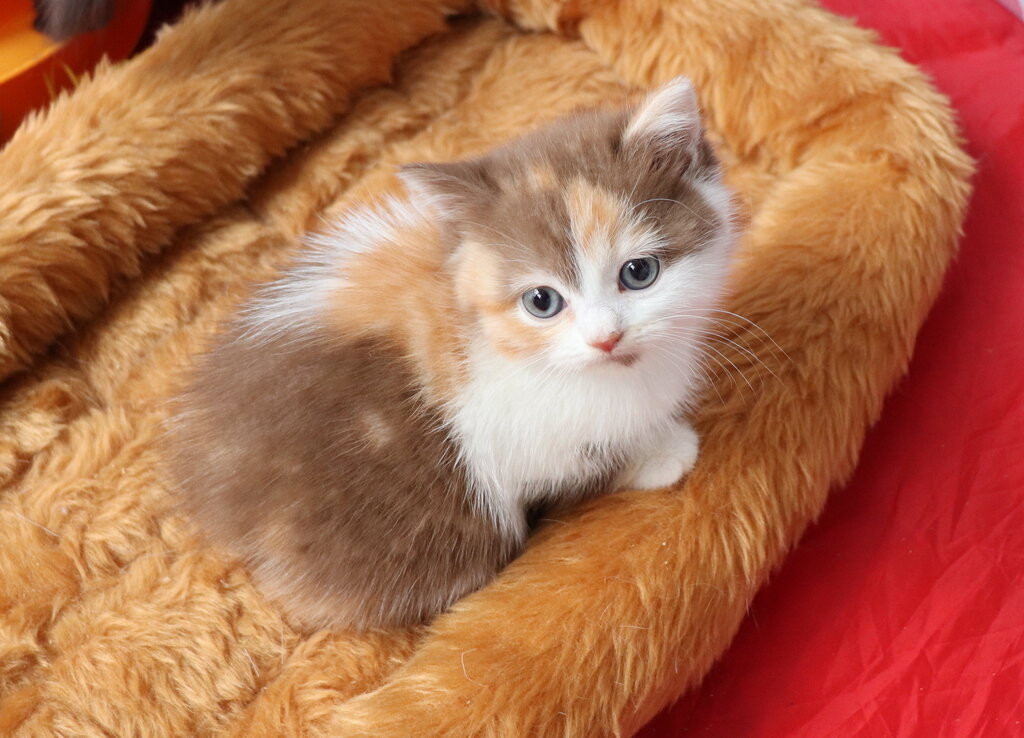
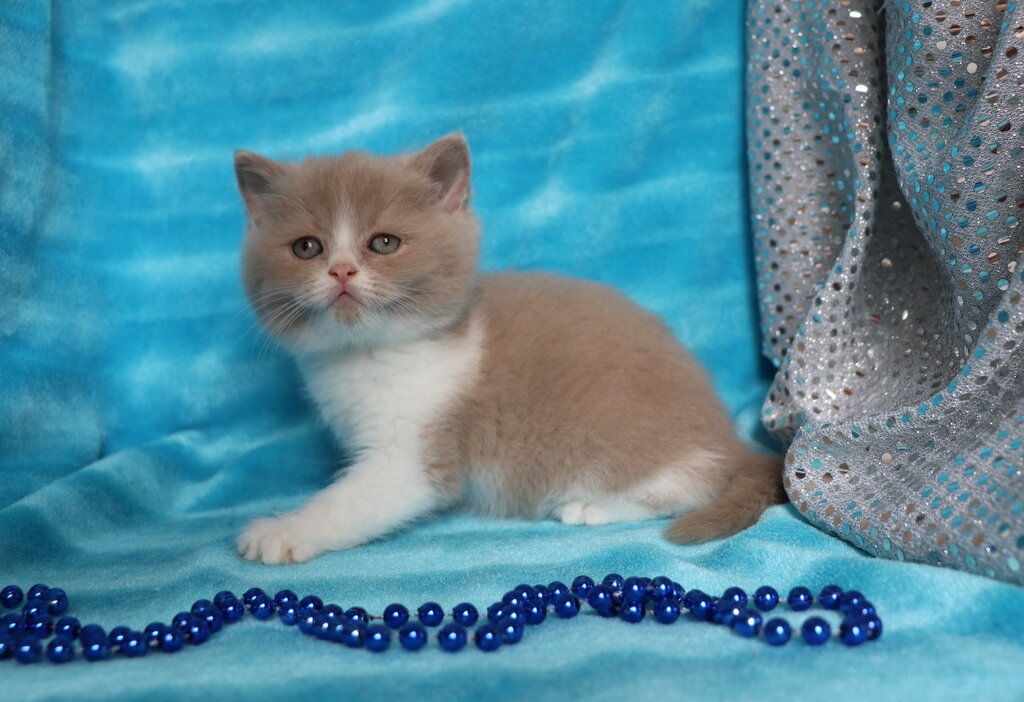
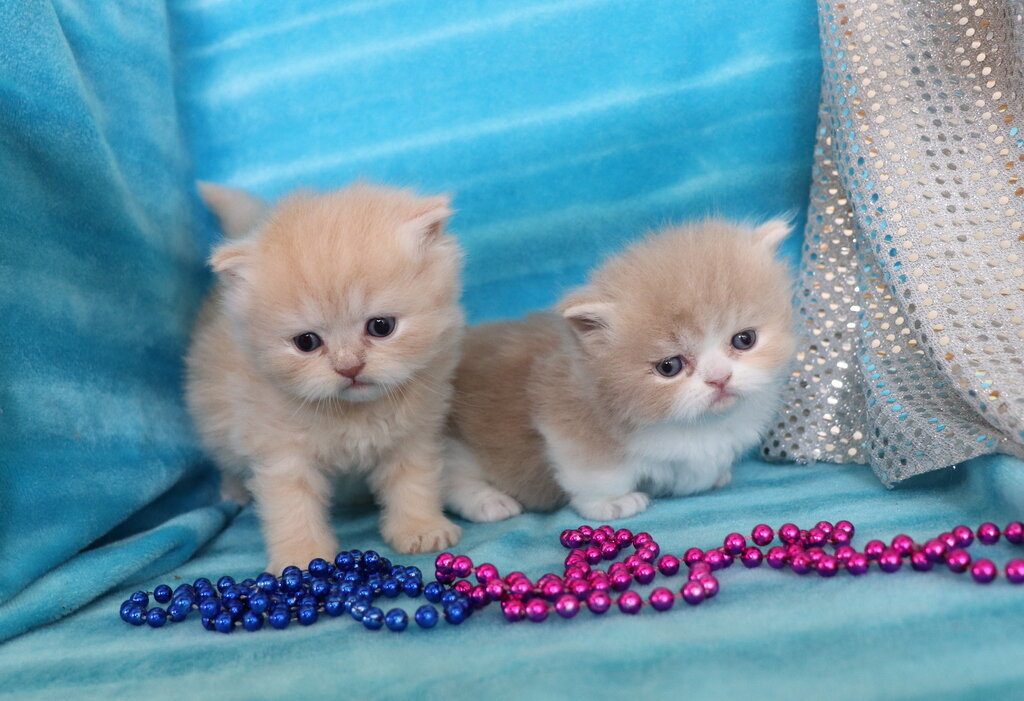
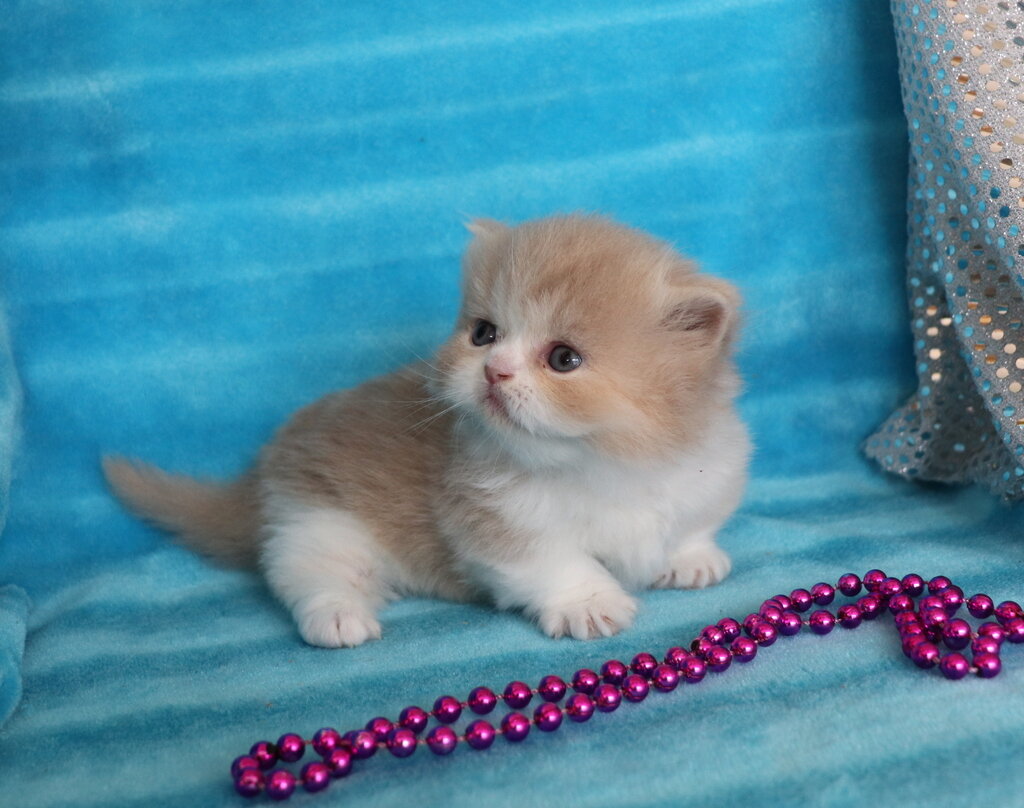
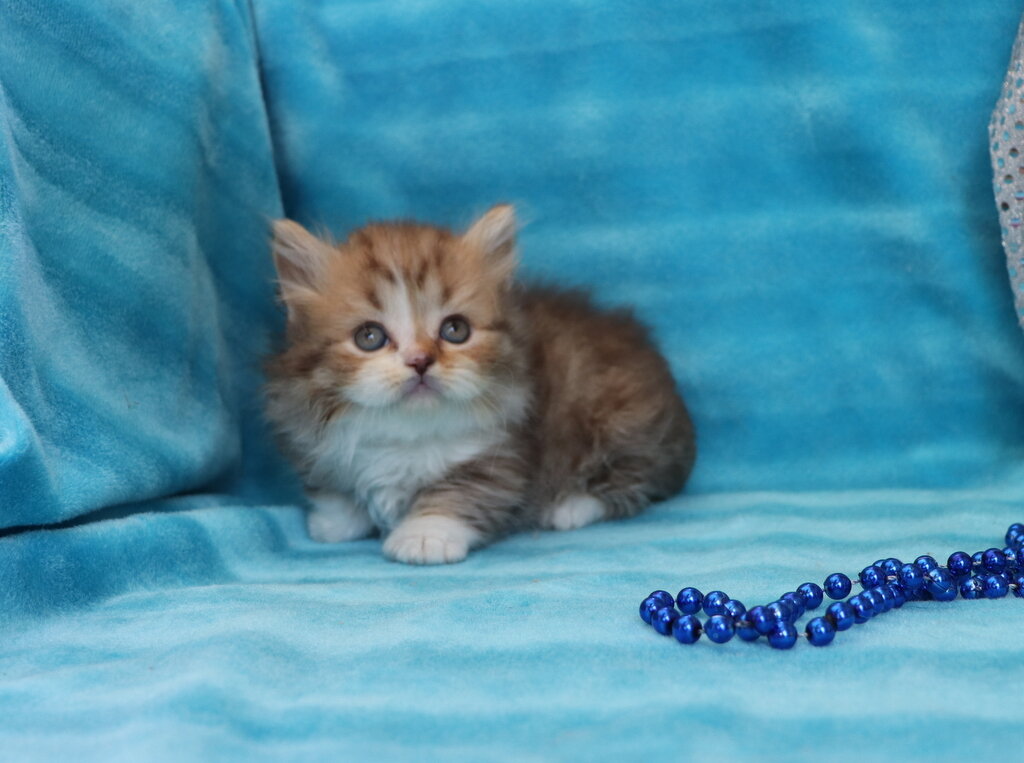
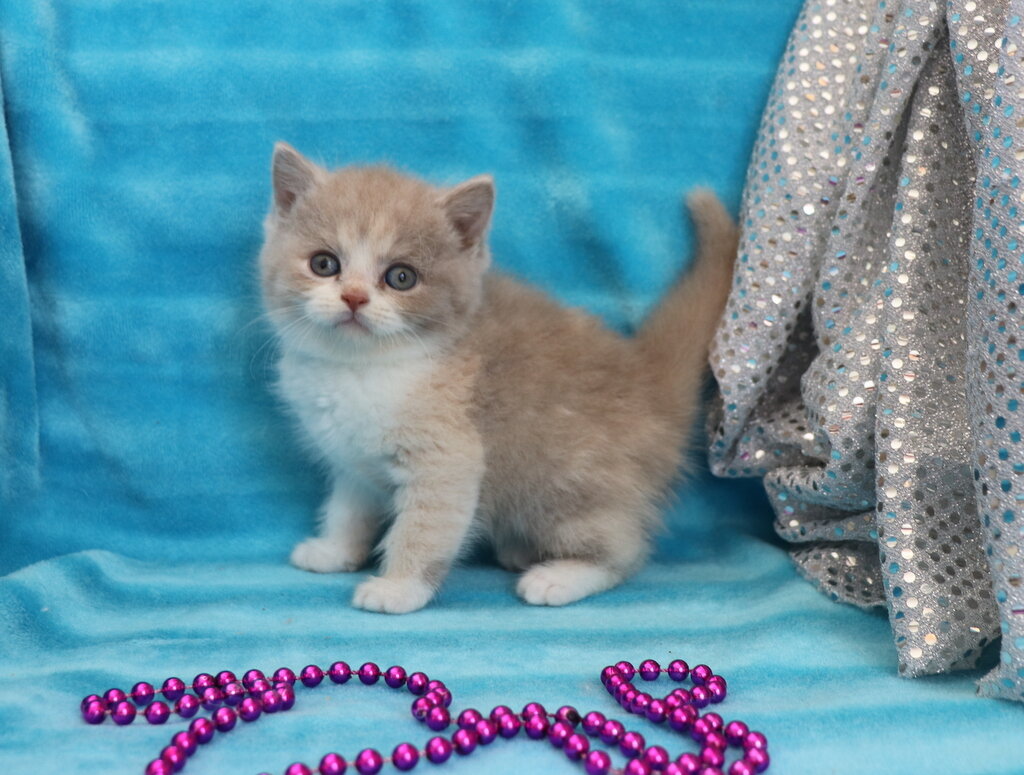


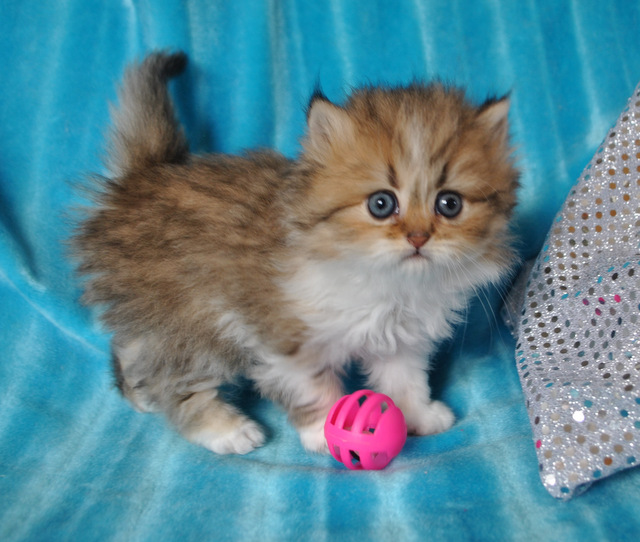
50% of Minuets are born as STANDARD (dwarf Munchkin-like legs) and 50% as NONSTANDARD - regular legs. STANDARD Minuet kittens are cross between Persian and Munchkin cat or between Persian and Minuet/Napoleon cat. Now - after 30 years of developing the breed - also true breeding is allowed - a Minuet to a Minuet. It is a NEW TICA RECOGNIZED breed. Ours are mostly short hair, but sometimes we have those fluffy and cute longhaired too.
Please fill out our very brief Application first - and following e-mails are the way of communication. We answer your phone calls, but you will not become an adopting family based upon phone call. I thank you for your understanding. .
DOB: 08/11/2024
CONTACT: Minuetkittens@gmail.com
NON-REFUNDABLE DEPOSIT: $ 400
TOTAL ADOPTION FEE: $ 1500
BEATRICE is my beautiful, short hair, blue point, standard Minuet girl. She is a dwarf kitten with short legs. She is a blue point, and her eyes will stay blue into adulthood.
BEATRICE is now weaned and ready for her new forever home.
*If you have submitted an application, you may TEXT us for further communication or to set up a FACETIME 760-721-4242
All the Applications will be answered.
*If you have submitted an application, you may TEXT us for further communication or to set up a FACETIME 760-721-4242
Our kittens come to your home litter box trained and with very nice clean habits. How to keep it that way ?
The rule is - use as many litter boxes as you have cats, plus one. Separated - in different quiet places, not together.
In our cattery we use only large open litter boxes with lower sides, to make it easier for the kittens to jump in. Some cats feel trapped in covered boxes with only one opening, so if you have covered litter box, keep it open for them - just for the first few weeks. We recomend you very much to watch SEVERAL U tube videos about litter boxes - Jackson Gallaxy : You’re Setting Up Your Litter Box All Wrong ! Please, please watch them !!!
We use fir saw dust pellets as a litter, which changes into saw dust when wet. For little kittens we first sprinkle a litter water over it, to make it soft. Your kitten will accept any material in a litter box, as soon as it is not too deodorized. But - to make the transition easier for them - we strongly recommend to start with the same, as they have here. Fir saw dust is probably better than pine but pet shops use pine. In our kittens and cats rooms and in the sun room we have a hard floors and we use steamer for easy cleaning and sanitizing. We steam clean the boxes too. ( In catios we have concrete floor but kittens do not go out there. )
(And we compost the used saw dust with grass clippings and use it for our flower gardens. Not veggie garden, please). 40 lbs bag of fir saw dust pellets cost about $ 6 in Lowe's, more in pet shops.
Please place your two-three litter boxes on easily accessible places and introduce your kittens to them. Cats are very clean creatures and they come very well litter trained, but if some mistake happens in a new home - it means correction is needed.
First - please forgive them, they are just a babies and they are trying hard to please you.
Second - make the adjustment. More accessible and quiet place, clean the box daily, make sure it has no odor, no deodorant. Do not bleach it! ( Bleach smell can repel them. You can use Accel/Rescue instead.)
Sometimes cat may develop an aversion to the elimination site because of its nature - smell, cleanliness, litter used, feaces present, size and color of the tray or location. The place may be noisy or associated with a stressful event. Our litter kittens are used to other cats and their elimination. But in time, later on, they may become more picky.
Sometimes helps if you let them choose the litter box place and material. Offer them several boxes in very different places - disposable carton or paper ones are fine. They may choose right spot. Or offer a different litter material . Again - they will let you know. Some cats want their own litter box. Some prefer poop in one and pee in another one. They will let you know what they prefer. Some smell really provoke them to pee on it ( plasic bags). When they pee in some unusuall spot, place the box there to prevent another peieng there.
Spraying - our males - fathers - do not spray, even if they are whole cats. So we expect our boys to be the same. Neutering when 6-7 months old should help too. Female in heat can spray too.
Some cats develop a habit to pee on some kind of materials. Plastic bags are common or objects with a chlorine smell. You have to be observant. There are many artickles on Interrnet how to solve it. Spray with enzymes - to liquidate urine smell totally - it is the must.
Just use common sence. Think like a cat. Location, size and shape of the litter boxes, litter box material, noise, cleanliness, smell…
Do not expect your little kitten to run from your upstairs bedroom all the way to downstairs laundry room to pee. Adult cat will always do it. But - if the noisy washing machine just starts - it may scare the cat away from that place forever. Again - Internet will provide usful info. If your cat develop some elimination problems later - OBSERVE her carefully.
You have many ways to make a changes and make her happy again.
GOOD PLACES TO WATCH ON U TUBE :
Jackson Gallaxy: - You are doing cat litter wrong & here is why. Litter box issues: Why litter matters. - - Why should you have another cat ?
What is the best type of cat litter box?; The best cat litter box set up.; Cat litter box hacks that will save your life.
FOOD
First ask yourself - What is the best food for a cat? Yes, you are right, it is a mouse. That mouse is not cooked, it is not clean and it is not bacteria free. If we love our cats, we should offer them the food as close to a raw mouse as possible. General comment: For healthy cats, pick canned foods that are below 10% calories from carbohydrates, at least 40% calories from protein, and approximately 50% fat calories or less.
We love our cats, so we feed raw food in our cattery but we also understand that making it is not for everybody, so we offer al so some modifications.
The simplest and easiest for the owner would be:
KEEP THE BEST DRY FOOD AVAILABLE FOR 24 HRS AND FEED THE BEST CANNED FOOD 2x per day.
Yes, I know, some people have a problem with raw meat - so cook it. Cook it slightly only, to kill the surface bacteria, but still to save some nutritious values. Taurin is the most important. If you cook the food, add Taurin powder, please ( Can buy at Revival animals.) Taurin is in raw red meat, hearts, liver.
You can get very good cat food info on the website of Dr. Lisa PIERSON - https://catinfo.org/commercial-cat-foods/ and https://catinfo.org/making-cat-food/ as well as Utube - Dr. Karen Becker : The Best and Worst Pet Food or Kitty Nutrition or several other Dr. Becker videos.
1/ DRY FOOD AS A SNACKS:
Our kittens have their dry food available for 24 hrs - to nibble on, whenever they want. In our cattery they use it a little, but we feed raw food twice a day and some canned wet food. Dry is just a snack.
At this time we use ROYAL CANINE for kittens, Hills Science Diet for kittens and Wellness dry and wet food for kittens - choice at least of three foods - available to them ALL THE TIME. From time to time we change one - not to develop picky eaters.
Please offer them the same dry food for the start ( transfer to a new home is very stressful, so try to keep some important things the same, at least for a few weeks - till they adjust.
There are some better cats foods available than we use, but remember - here it is mostly just a snack.
If you plan to feed more dry, my advice would be - try to switch slowly to the best ones - Cats are carnivores. Choose dry food with maximum of ANIMAL PROTEIN, fat is OK, but MINIMUM of carbs. Wellness, Blue Buffallo and better. You will save on vet bills.
2/ MAIN FOOD - RAW MEAT
We make our own raw food for them and for many years we follow the recipe of Dr. Lisa Pierson - the Veterinarian. She used to use frozen rabbits. We use chicken legs instead. Her websites was modified over years. Here is one - catinfo.org
We get inexpensive chicken legs ( with bones) from Wal-Mart, beef heart ( whole ones from Starter Brothers), chicken gizzards - heart and stomach, chicken liver and beef liver, eggs with a shell, grind turkey, grind beef, grind pork shoulder...) and an electric grinder . Since you cannot grind raw chicken skin, we skin the legs and cook the skin first. Than it is easy to grind. We grind chicken legs with bones.
( There is much more taurin in legs than in breasts and also price is better, but whole chicken should be just fine. ) We slice beef heart and grind it ( even more taurin, than chicken) or we use chicken hearts and gizzards instead. We may add grind turkey or grind beef or grind pork. You cannot feed cats by meat only, without bones, because Ca to Ph ratio is important. With meat only they would get too much Ph and no Ca.
Than we grind eggs boiled with the shells, half way only, yolks still liquid - adding more Ca. (Never raw egg whites, please.) It is all mixed together, placed into smaller containers or plastic bags and frozen. Even if we wash all the meat before grinding very well, we hope that freezing it for some days or weeks would still help to kill Salmonella. Before feeding this mixture, we still add VITAMINS from Revival or Alaskan salmon oil and so on.
Cats stomach juice is so much more acidic than humans, so Salmonella should not be a problem for them. ( I think killed mouse would have more in it than only Salmonella and still - it is the best food for them. ) I know, it is difficult to go through all of that, when you have only one or two cats. But it is still possible, if it is a little modified.
You might hear that pork is not best for cats. It is just a myth from the past. Today's raw pork is just as safe for cats as beef or chicken. Our cats love it for years
3/ RAW FOOD MODIFIED:
As I said, you just cannot feed raw meat only, since it would be too much of phosphorus and not enough of calcium and other minerals. But you still can feed raw. NO GRINDER : Buy FRESH grind chicken, turkey, pork, beef meat and freeze it in a little ice cube tray. Than mix it with the best wet food and with the powder bellow. No grinding meat at home.
Look at the website of www.foodfurlife.com from NJ. You can get their powder, buy your grind turkey or chicken or pork or beef, as fresh as possible and mix it with their powder. It will add the calcium as well as all other necessary ingredients, which whole mice have but grind plain meat does not. And read their articles too. Very educational. The package bellow is enough for 130 meals. Of course - if you have problem with raw, you can add this to your cooked meat. It will never be as nutritious as raw would. I do not have my own experience with it.
4/ MORE MODIFICATION
If your cat will not go really crazy after raw, mix it with canned food. Get Friskies from Costco and add if to her food for smell and water content.
You can also feed your cat sometimes just with canned wet food. Wet has 70% of water in it, so it is still important, since cats never drink enough. It may save you money on vet bills, but your cat will not live as long as when fed raw.
WHAT ELSE OUR KITTENS AND CATS GET:
We use goat milk, fresh, evaporated or dry ( from Wal-Mart) which is much easier digestible for kittens and cats. Sometimes we mix it with Half & half - if mama cat does not have enough milk.
Milk is safe to give till age of 12 -14 weeks. After that, SOME kittens MAY become lactose intolerant. Just the same like with people. People from the North tolerate lactose very well. They were used to raw milk for thousands of years, since their milk stay fresh longer.
People from Mediterranean have more lactose intolerance, since their milk in hot weather was changed to yogurt or kefir and all the lactose from it was digested by bacteria, so lactase was no more needed later in people's lives. It means - your Persian cat may not tolerate lactose, but your Russian or Norwegian will. If your kittens will stop tolerating goat milk after 12-16 weeks old, you may switch to yogurt. Just plain yogurt, no additives!!! No pectin, starch or other thickeners, please. We feed probiotics. In the past we used just powder from Revival, but now we use a lot of yogurt too.
So - our younger kittens get goat milk, sometimes mixed with Half and Half and we make our own yogurt from full milk in Instant Pot for those who would have loose stools from milk later in their lives. Very easy.
Than - the food is also used for helping the digestion, correcting stools, please them or bribe them.
With raw food their stools is firm and very small, not smelling bad. BIG difference than when feeding dry food only.
Our cats get sliced and cut raw chicken hearts and gizzards. They get chicken or beef liver, sliced raw when constipated, cooked and sliced when stool is loose. Sometimes they get a little of canned tuna - or mostly only a water from the can - to make their food smell better and increase the appetite.
The hit - specially for young kittens, just starting weaning - 4 -5 weeks old: boiled chicken legs, blended in blender with broth. It is something like a human Baby food in those little glass jars. EVERYBODY LOVES IT ! Nursing moms usually eat it before babies get the chance!
Alaskan Salmon oil may be added to their raw food for omega 3 and better coats - for those, who love fish (some do not). Not plants based omega 3 - they cannot digest it. They also love tiny shrimp.
But this is another subject - and yes, we use many different food additives, like Probiotics, Taurin, vitamins, Forti flora , L- lysin and more. If, This is what we order from Revival. Please read their articles on the Learning Center.
Your ultimate resource to familiarize yourself with our cattery, the breed, and what to generally expect during the adoption process.
Q: Why do you love Minuet kittens?
A: There are so many reasons. We adore their thick velvety coat, their sweet and loving personalities, their look, cuteness and their loyalty. They tend to also be amongst the least allergenic breeds and are growing in popularity. My breeders are imported from the best international lines.
Q: What is the health of Minuet kittens like?
A: I breed for health. Minuets are a healthy breed. They do not have any diseases related to breed. We tested all our adult breeders for PKD - Polycystic Kidney Diseases at UC Davis and they are all negative. When parents are negative, kittens cannot inherit PKD. Some health problems can be triggered or aggravated by inbreeding, and some cat breeds in the US were or are in-bred. It is not the case of Minuets, beacuse they are in between two breeds. Originally Persian and Munchkin cats were used to create Minuet (older name Napoleons ). As a Healthcare professional I vaccinate all our kittens myself and I use MLV Nobivac - triple vaccine that protects against feline rhinotracheitis, feline panleukopenia (FPV), and feline calicivirus (FCV), plus protects against feline Chlamydophila. My kittens are vaccinated at the age of about 6-7 weeks and again when 9-10 weeks old. They are also wormed trgularly. I use Revolution as a flea prevention.
Q: Why do you recommend adopting two kittens?
A: I personally never had just one kitten. Getting two kittens at the same time is best for both your family and the kittens. You will have 10 times more fun with two kittens than with just one. It is a whole new world! The kitten will have his buddy with him when leaving his mother and our cattery, and the travel and transition will be so much smoother. All the crying (and meowing) of the first days will be eliminated, and stress from new environment will be cut in half.
Two kittens will keep each other company when you are not home. Each kitten needs at least one feline and one human companion. We also discount the second kitten and we charge only one shipping fee for both. Unfortunately, your elderly cat is not a suitable companion for a young kitten. He can watch the kitten play, but will not interact much with him, so even if you do have a cat at home, you still need to consider two young kittens.
Based on many years of experience of breeding, I know they miss feline to feline interaction, and suggest they get adopted together. A boy and a girl make the best combination. Two boys are still a better combination than two girls, unless raised together. Before you decide, listen please on U tube “Jackson Gallaxy : Why you should get another cat?” And many other his videos.)
Q: What is a NON-REFUNDABLE deposit?
A: When a kitten is reserved for you, it is taken off the market, so to speak. It is your kitten now, you are just waiting for him to finish nursing and learning all necessary life skills from his mommy, and get ready for his or her new home. The kitten is now not available to others, who may also be interested.
(Canceling suddenly triggers a large amount of new bathing, new grooming for photographing, cropping, publishing, advertising, new communication with a new possible families. There is a lot of time involved with it and all that makes the kitten more expensive.) The DEPOSIT is $400, but please be sure about your kitten before you pay, since as with all other catteries, the deposit is not refundable.
Q: Are you able to ship your kittens?
A: We had over several years of a good experiqnce with cargo shipping all over USA. With Covid-19 airlines policies have changed so please inquire with me first about shipping.
1/We prefer and recommend to all adoptive families to pick up their kitten in person and take it in cabin. ( Check the policy of the airline you choose, please.) It is the safest and most comfortable way for the kitten. I will take your kitten to the airport to meet you there.
2/ We can use a PET NANNY service - again - I will take the kitten to the airport and you will get it from her at your airport.
3/ We do use several airlines pet cargo programs, and even though they have temperature controlled and air pressurized pet cabins - they are imperfect. There is a weather restriction - only between 45 - 80-F airports temperature, some smaller airports have day and time pet program limitation or are closed over weekends. California Rabies vaccination is the last complication
Kittens are vaccinated in CA after 4 monnths old and than 4 weeks of vaccine waiting.
Q: What if I live close by and do not need shipping?
A: If you live in So CA - and you already RESERVED a kitten on our website, then you can pick up your kitten in our home, after they have been weaned, vaccinated, and prepared for a new home. All the other rules are the same as for the customers who need shipping. During Covid-19 we follow all safety guidelines.
Q: How do I RESERVE a kitten?
A: When our new kittens are about 3-4 weeks old, we place their first picrutres on our websites. With the Application, you can place $ 400 deposit on the kitten via your bank Zelle, using our e-mail) and it will be reserved for you. Once the kitten is reserved, the deposit is not refundable and generally not transferable to another kitten. The deposit does apply toward the kitten adoption fee. Please note kittens are reserved on a first come, first serve basis in terms of receiving your deposit (not your application). Some Applicant like to facetime the kitten before the deposit paid. It is possible.
Q: Can I come to choose a kitten?
A: After some past unpleasant / disrespectful experiences we are not open to the public anymore. You cannot come into my home and see the little babies, because it disturbs the mothers, the nursing process, and our privacy. The rules are nearly the same as for any Internet purchasing. I used to welcome prospective families in my private home in the past, in spite of them coming sometimes in big groups, with kids, relatives and kids friends. It is not safe to invite into our home someone we met on the Internet and I believe most of you would be hesitant to do that as well. So thank you in advance for understanding.
Note: But the customers/families who have reserved a kitten, can visit/see THEIR RESERVED kitten after the first set of vaccinations are done at about 6-7 weeks old with mutual agreement.
Q: When is payment for the adoption fee for my kitten due? A: Full payment can be split in two. When the reserved kitten is 5-6 weeks old, the first half payment plus transport fee (if needed), are due. At this time I am not accepting Paypal or Venmo payments. Another option is Zelle.
The second half payment (less the deposit) is due shortly before shipping or at personal pickup time (same as above applies). You will also receive a Health Certificate with your kitten and their vaccination records.
Q: At what age can the kittens go to their new home?
A: The Cats Associations' answer is : at 12 - 16 weeks old. There is the earliest possible age, and then there is the optimal age. There are really many factors involved in this: size and maturity of the kitten, whether or not the kitten will need to be shipped, whether or not one kitten is traveling, or if two are going together, customer cat experienced or new cat owner etc. Most of our kittens go home on the early side of this spectrum.
1. If the family lives locally, no shipping is involved, older children, adult at home (or working from home), taking two kittens at the same time, the kittens are average size, if experienced cat owners in the past: In this case the answer is - at the age of 10 - 12 weeks.
2. If a single person, working long hrs, shipping across country, one really tiny kitten, if a first time cat owner: the time frame is closer to 13 - 16 weeks. Our veterinarians do not want kittens weighing less than 2 - 2.5 lbs prior to shipping.
So - it all depends on the size and weight of the kitten, his independence from mother, life skills he already learned (newborn kitten for instance does not know how to retract his claws, and his mother and siblings have to teach him. Same with biting. You do not have the ability to teach them).
An important fact is - that a kitten starts bonding with people when about 11 - 12 weeks old. ( Before that age they prefer the mother and siblings.) So it does not make too much sense to really push to get him younger than that. When to ship the kitten is strictly my decision, together with my vet.
Q: How about the kitten's pedigree?
A: All my breeding cats are pedigree cats, they are all registered with TICA.
Your kitten comes with a Contract and a Health Certificate and with a one year guarantee against a hereditary disease. You are not allowed to breed our kittens without breeding rights, which have to be agreed and paid for ahead of time. Part of the Contract is, that the kitten has to be neutered at the age of 6-8 months. After you provide us with a veterinary proof that the kitten was spayed, and when arranged ahead of time, then we can forward you kittens registration documents and a small TICA fee will be due. This has to be arranged prior the adoption, because it is quite time consuming and 90% of families do not request registration. We randomly neuter some kittens.
Q: Are your kittens spayed or neutered before leaving the cattery?
A: Sometimes. Our decisions are made together with our veterinarian, who is very experienced and specializes in cats only. Yes, in some catteries the kittens are fixed very young and since it is a major surgery for females, sometimes they die. Some breeders do it -since they want to be sure the buyer will not breed the cat illegally. We have the statement in our CONTRACT and we trust our adoptive families, that they will abide by the contract and will not breed the cat illegally, without breeding rights. :)
Q: How do I prepare for my kitten?
A: I have two sections to read under More Resources (on my website): Preparing for your Kitten, and Kitten Nutrition. Please look at those, and it will give you a great starting point and answer nearly all of your questions.